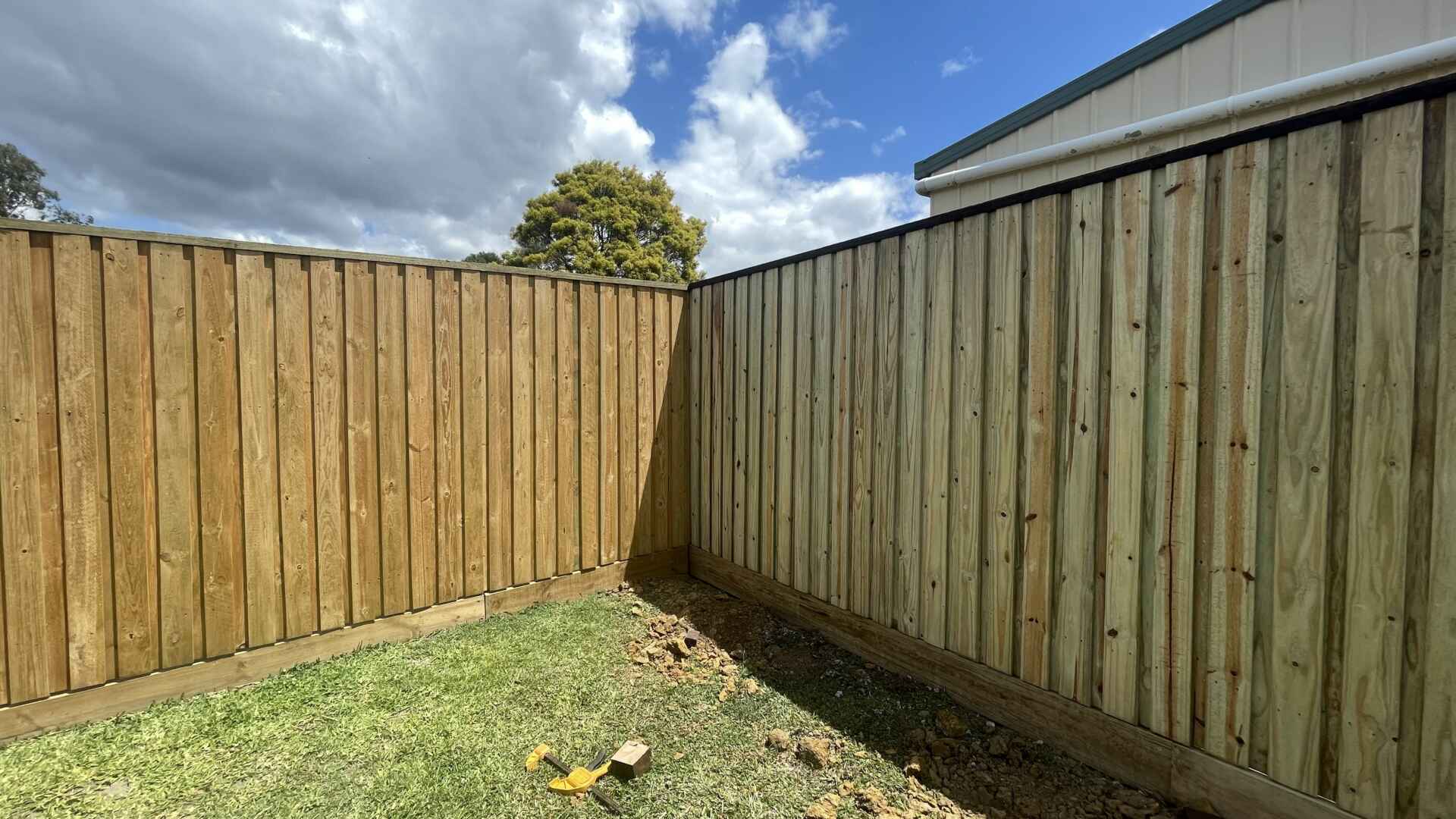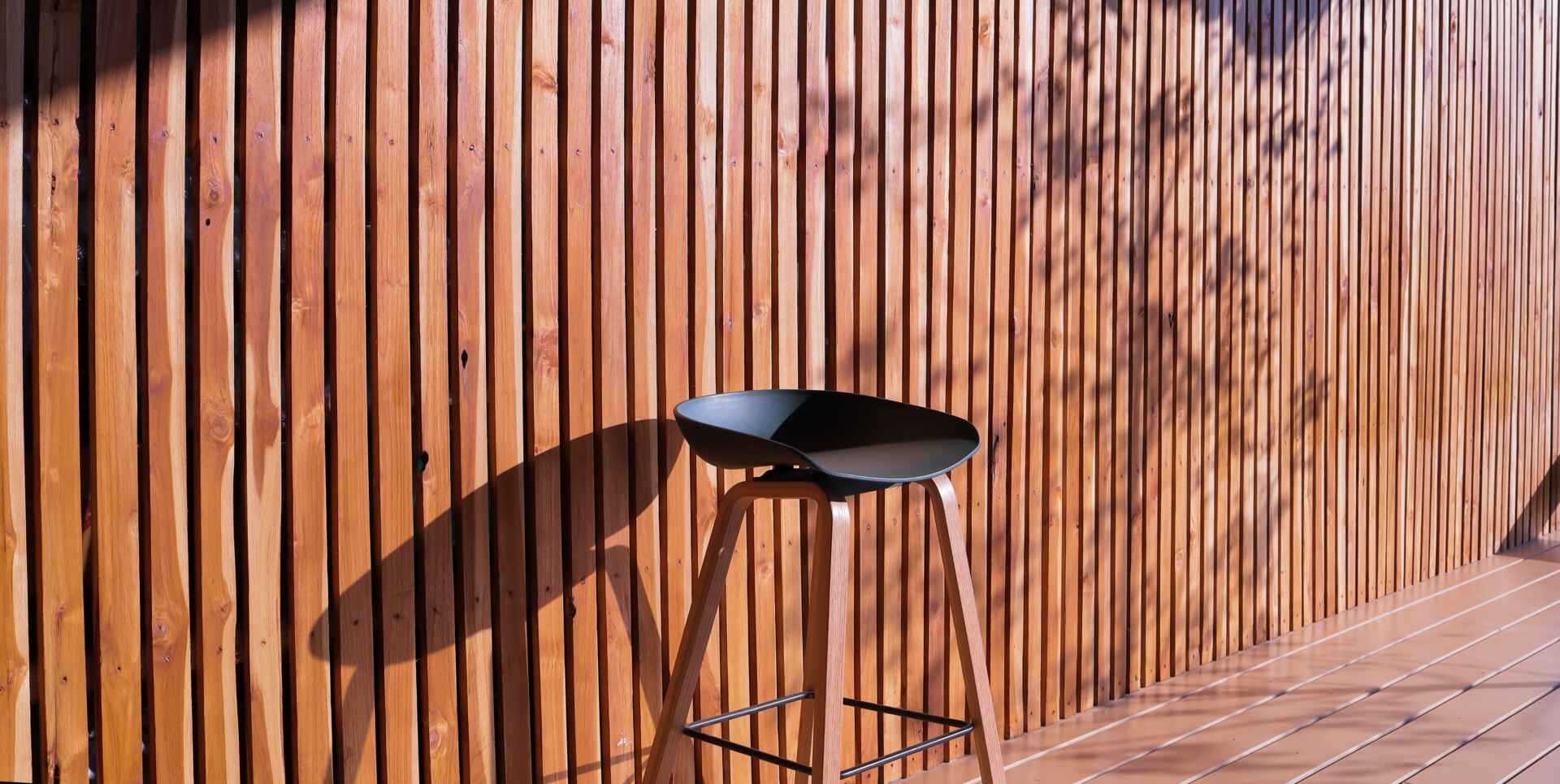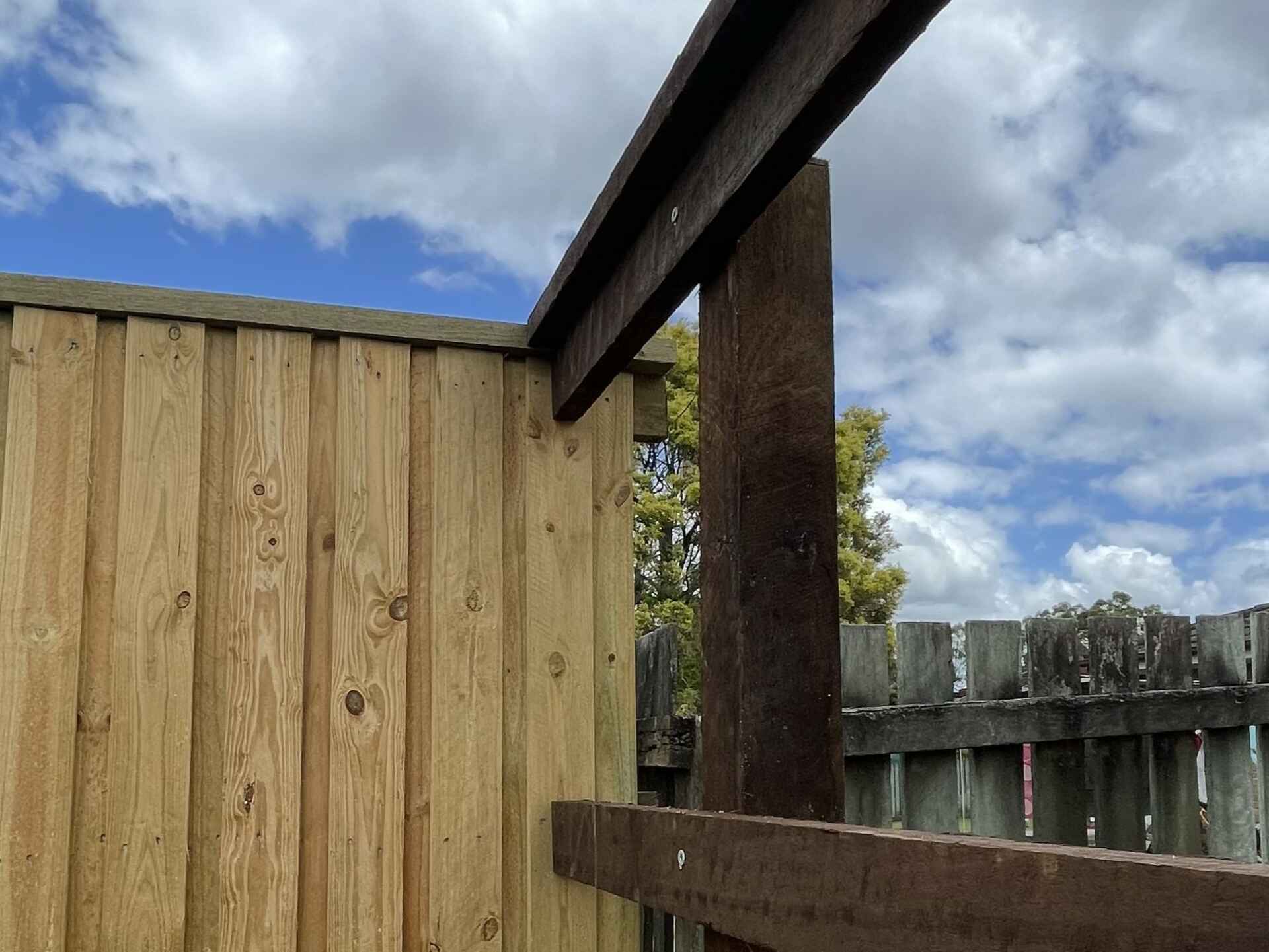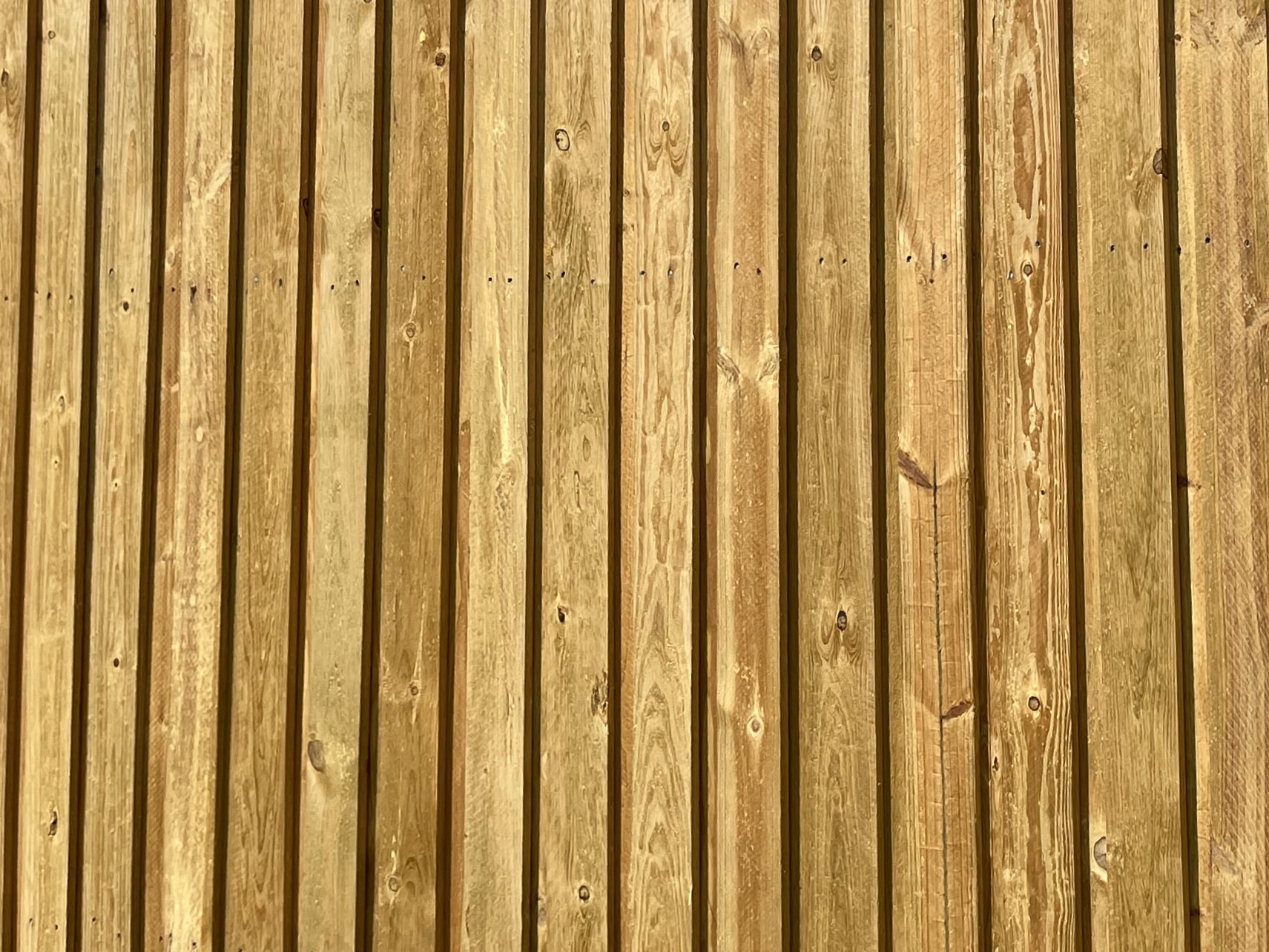
What is the best timber for fencing?
Curious about the best timber for fencing? Whether you're replacing an aged fence and aiming for enduring quality or fencing your property for the first time, this comprehensive guide is your go-to resource. Explore everything from the best timber for fence posts to the best timber for fence palings and learn more about timber treatments.
Different timber options for fencing
Hardwood (see image above)
Hardwood timber fencing gives unparalleled durability for your fencing posts, rails and palings. Hardwood has a natural resistance to decay and insects which offers lasting strength and reduces maintenance needs. With H3 treatments applied, the natural resistance of the timber is fortified making it a high-quality choice and therefore priced higher than softwoods such as pine. All in all, hardwood’s enduring quality and striking appearance make it a premium choice for a long-lasting and sophisticated fence.

Softwood
Softwood timber, mostly pine fencing, presents a versatile and cost-effective decision for multiple fencing needs. While softwoods are more susceptible to decay and insects compared to hardwoods, H3-treated pine removes this concern. Its lighter colour and consistent appearance add a charming, uniform look to any property. Pine fencing remains a popular Aussie fencing choice despite its potential maintenance needs, due to its affordability, adaptability and charm.
Factors to consider when choosing the best timber for fencing
When choosing timber for your fence, consider factors such as durability, maintenance requirements, and affordability. Look for timber that can withstand the regular weather conditions where you live, whether it be rainy and wet or hot and humid. Consider H3-treated timber to repel pests for longevity and lower maintenance needs over time. While some options have higher upfront costs, weighing in their durability and lower maintenance can be more cost-effective in the long term. Assessing these factors will help you find the right timber for your fencing project.
Looking for something extra special? You should consider timber screening to give your fence that ‘wow’ factor. See the Merbau screening used below.

Best timber for a durable and long-lived fence
So, you’ve decided that having a durable fence that withstands weather, pests and decay over a long lifetime is the most important factor to you? A hardwood timber fence will be your best choice. Consider that whilst there may be more upfront costs, you’ll find that fewer boards will need replacing over the years and aesthetic weathering like cracks, bowing or chipping won’t be something you need to worry about very often.
Best timber for a cost-effective fence
Perhaps for right now, your fence may not be your top priority project and your biggest concern is cost. Or maybe you prefer the style pine fencing provides. Either way, pine fencing is an easy choice. In Australia, pine is one of the most common fencing materials and is a staple in lots of Aussie neighborhoods.
Tip: One thing you can do to level up your pine fencing is by using hardwood rails and posts! This will add extra strength to the structure of your fence whilst keeping the lighter wood style of pine fencing with your palings.

Best timber for fence posts and rails
The posts and rails are the most important part of a timber fence frame. They hold up the entire fence, and if they are not installed properly the fence may fall over or become unstable. When choosing the best timber for your fence posts and rails, durability and stability is key. As our hardwood fence posts and rails are treated to H4, we recommend choosing these for added durability and longevity, even if you are using pine palings. Your fence posts will need to be cemented in the ground. Hardwood has a higher rating for in-ground durability and is recommended as the best timber for your fence posts for this reason.
As an alternative to hardwood, H3-treated pine is suitable to use for your fence posts and rails due to the added durability and resistance the treatment provides.

Best timber for fence palings
Fence palings are what really bring your fence to life. Choosing fence palings that suit the overall aesthetic of your home whilst meeting durability requirements for your area is key. Start by assessing the natural conditions your fence will face, such as weather patterns and exposure to sunlight. Hardwood is a popular choice due to its natural resistance to decay and insects. Consider the visual appeal as well; different timbers offer distinct colors and grain patterns. Lastly, factor in your budget as timber prices can vary. Ultimately, a well-informed decision based on your specific needs and preferences will result in a fence that not only enhances the look of your property but also stands the test of time.
Timber fencing: making the right choice
Choosing the best timber for fencing is a crucial decision that involves factors such as durability, maintenance requirements and cost.
Hardwood stands out for its unparalleled durability and natural resistance to decay and insects. While it comes with a higher price tag, its long-lasting strength and premium appearance make it a popular choice for those wanting a long-lived fence. Conversely, softwoods like pine provide a flexible and budget-friendly solution for fencing requirements. H3-treated pine boasts enhanced durability, making it a popular choice in many Australian neighborhoods.
Use our fencing calculator when planning your new timber fence project. It makes calculating quantities quick and easy.